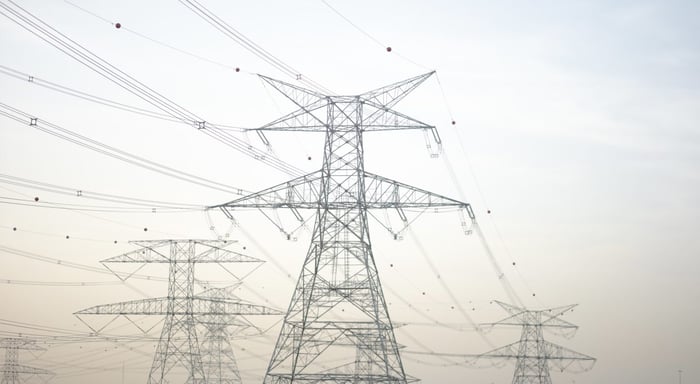INSIGHT by Carbon Tracker


“The electricity grid is not fit for purpose because investments are not increasing in step with the rapid growth of wind power. Without significant improvement in the permitting timeframes for critical energy transmission infrastructure – the grid can’t support the government’s plans to decarbonise generation by 2035 or deliver on its vision of ‘affordable, homegrown, clean energy.”
“If no action is taken, wind congestion costs could treble in the next three years. However, by prioritising investments in grids and flexibility, potential congestion costs of £3.5bn could be halved by 2030.”
-Lorenzo Sani, Carbon Tracker Power Analyst
Gone With The Wind? – Grid congestion and wind integration in GB calls on policymakers and regulators to prioritise transmission project delivery as a matter of urgency, focusing on the need to fast-track permits and for better anticipation of growing demand bottlenecks requiring investment in strategic infrastructure, before they reach a critical phase.“This report shows how essential it is to upgrade our electricity grid to reach the Government’s net zero target. We’ve known for years that more renewables need to be built to meet our goals, but the network has not kept pace, creating bottlenecks and constraints in the system, and this is costing consumers hundreds of millions of pounds. The solution to this problem is clear: building more grid is essential to getting low cost, low carbon power to consumers and reducing our reliance on gas imports.”
- RenewableUK’s Director of Future Electricity Systems Barnaby Wharton
The report reveals that on more than 200 occasions in 2022, bottlenecks in the transmission system meant National Grid ESO had to pay Scottish wind farms to stop generating zero-carbon power and pay gas power stations in England to increase output to compensate. This added £800 million to consumer electricity bills and increased greenhouse gas emissions by 1.3 million tonnes. Scotland has 10GW of wind farms but accounts for only 10% of GB electricity demand, so much of the power they generate is consumed in England. However, the grid can currently only transmit a maximum 6GW across the border, so on windy days this generation must be curtailed due to what the report calls “wind congestion” and gas stations fired up. The wind congestion problem will persist until such time as the transmission bottlenecks are solved. As wind deployment outpaces grid expansion, curtailment costs on the Scotland-England boundary are set to soar dramatically“The UK is wasting a lot of wind power – and this is only set to continue. The grid’s capacity is holding back our ability to effectively harness the growing amount of green energy that’s available. Building more cables is important, but we can also use our existing infrastructure more intelligently. Our research shows that transitioning to a flexible energy system, whereby we incentivise demand to match supply using the right price and carbon signals, presents a huge opportunity that we must pursue to realise our net zero ambitions”.
-Lucy Yu, CEO of the Centre for Net Zero
The report calculates that by 2030 grid congestion across the B6 Scotland-England boundary could be wasting 20% of Scottish wind output – enough electricity each year to power more than five million households. If gas power plants continue to make up the shortfall combined payments to wind farms and gas plants could reach £3.5 billion a year. Scottish wind farms make up 40% of current GB wind capacity but they account for 95% of wind curtailment events because of the transmission bottleneck across the border. And in more than 85% of these events gas plants elsewhere on the grid are requested to increase generation by the same amount as wind is curtailed, pushing up emissions. Overall, from January 2021 to April 2023, £1.5 billion has been spent to curtail more than 6.5 TWh of wind power resulting in 2.5 million tonnes of emissions. In 2022, 4% of GB wind generation was wasted due to wind congestion – 3.4TWh – equivalent to the yearly consumption of 1 million British households. With gas price volatility at a record high following Russia’s invasion of Ukraine, gas-fired plants were paid nearly £600 million to compensate for curtailed wind power, increasing UK emissions by 1.3 million. During 2022 when consumers experienced record-high electricity costs, the grid wasted record amounts of much-needed cheap and clean electricity, because it could not effectively transfer wind generation from Scotland to England, and this is only getting worse. Wind Curtailment January 2021 – April 2023Read the full report
aboutThe Carbon Tracker Initiative is a not-for-profit financial think tank that seeks to promote a climate-secure global energy market by aligning capital markets with climate reality. Our research to date on the carbon bubble, unburnable carbon and stranded assets has begun a new debate on how to align the financial system with the energy transition to a low carbon future. www.carbontracker.org All opinions expressed are those of the author and/or quoted sources. investESG.eu is an independent and neutral platform dedicated to generating debate around ESG investing topics.


